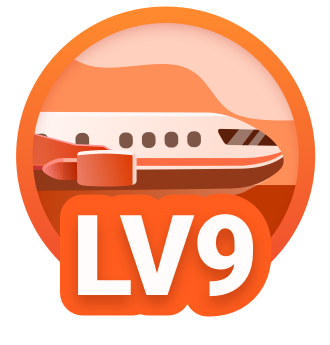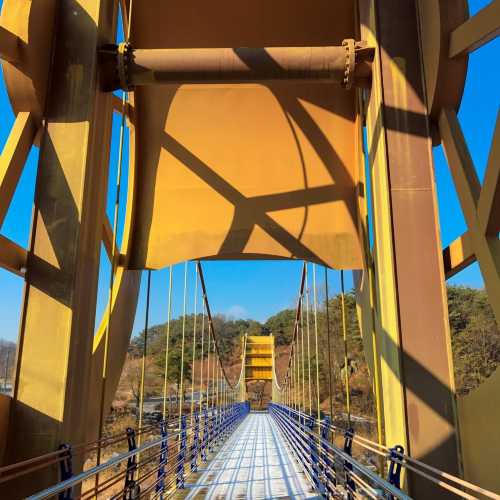Popular Trip Moments
This is the Yecheon Museum in Yecheon-gun, Gyeongsangbuk-do. | This is the Insect Ecology Experience Center in Yecheon-gun, Gyeongsangbuk-do. | Yecheon Indoor Date Pork Cutlet Restaurant Snowflake Fresh Pork Cutlet | The last remaining tavern in our country | Yecheon Samgang Cultural Complex where you can also see a musical fountain💜 | If you go to Yecheon, you must visit the Bobusang Cultural Experience Village🤎 | Recommended fall travel destinations in Yecheon that are great for a stroll🧡 | Samgang Cultural Complex Naru-ter is a great place to take certification shots💛 | Samgang Inn, a great Yecheon travel destination for a fall outing💜 | Yecheon Travel Essential Course Samgang Cultural Complex💚 | Yecheon Samgang Ecological Park, where a music fountain show takes place | Yecheon Samgang Ecological Park, a great place for a fall walk | Places to visit in Yecheon recommended for family travel | A great travel destination in Yecheon for a light stroll | Samgang Cultural Complex, a great place to explore every nook and cranny | Samgang Cultural Complex with many things to see | A great fall travel destination for a stroll in Yecheon | Yecheon travel destination that is good for a light walk | Samgangnaru, a must-see course for Yecheon travel | Jangansa Temple with a rock shaped like a unique toad | Peaceful Jangansa Temple | Feeling from Hwarongpo Observatory | Yecheon Hwarongpo Observatory | Yecheon Insect Ecological Park, a great place to play with kids all day long🐝💛 | The taste and style of Yecheon, Gyeongbuk! | A famous place in Yecheon where you can see barley and rapeseed flowers at a glance | Emotional Gyeongbuk Yecheon Gamcheonjae | A cafe with a great atmosphere in Yecheon | huge stadium, Yecheon | A large cafe in Yecheon full of healing, "Jangyuwon"
Recommended Attractions at Popular Destinations
Bangkok attraction near me | Manila attraction near me | Tokyo attraction near me | Taipei attraction near me | Hong Kong attraction near me | Seoul attraction near me | Kuala Lumpur attraction near me | Los Angeles attraction near me | Shanghai attraction near me | New York attraction near me | Shenzhen attraction near me | Osaka attraction near me | Singapore attraction near me | London attraction near me | Guangzhou attraction near me | San Francisco attraction near me | Beijing attraction near me | Macau attraction near me | Bali attraction near me | Jakarta attraction near me | Paris attraction near me | Ho Chi Minh City attraction near me | Istanbul attraction near me | Phuket attraction near me | Chicago attraction near me | Seattle attraction near me | Toronto attraction near me | Orlando attraction near me | Cebu attraction near me | Chiang Mai attraction near me
Popular Attractions
Universal Studios Japan | Prince Kung's Mansion | Meiling Palace | Yu Garden | Congregação Cristã no Brasil - Jardim Indaia( Recreio Campestre) | Universal Beijing Resort | Kuala Lumpur Tower | National Stadium-Bird's Nest | National Natural History Museum of China | Suzhou Museum | Tianmen Fox Fairy | War Memorial of Korea | Shanghai Wild Animal Park | Bali Bird Park | The Marble Mountains | Former Residence of Zhou Enlai in Shanghai | Punting On The Avon (Antigua Boat Sheds) | Meicun Taibo Temple | Tai Hu Yuantouzhu Scenic Spot | Zhangjiajie Ice and Snow World | Mushola Baitul Mutaqin | Gadadudev Mandir | Masjid Al-IKHLAS | Font de Vilamanya | Masjid Al-Ihsan | Eglise Sainte-Catherine de La Flotte | MUCAB | Oscars församling | Forte di Campolongo | Global Evangelical Church. Emmanuel Chapel Duakor
Popular Restaurants in Yecheon
Jeongugeul Dallineun Cheongpojip | Dangol Sikdang | Midang | 다솔촌 | Kala | I Husband Seasoned Chicken Restaurant | Great Sage | Ddorae Orae | Jeom Village Drivers' Restaurant | Nourishing Food Dang | Baekgyeong Sashimi Sushi | Baeksu Restaurant | Pung Lamb Deok Mountain Korean Beef Village | Best Korean Beef Town | Bomun Mexican Chicken | Pu Reong I Cold Buckwheat Noodles | Genuine U Village | Street Rimseong | Ilsin Ribs | Song Wol Meat Eating Restaurant | Awesome Restaurant | Head Family House | Ye Cheon Genuine Korean Beef Gol | Suseong I Ne Restaurant | Famous Pork Back-Bone Stew | Dongbu Meat Eating Restaurant | Eunhasu | A Mude Na | E Wheat Terrace | Chicken Mill
Popular Ranked Lists
Top 12 Local Restaurants in Glasgow | Top 3 Best Things to Do in Zhoukou | Popular Premium Hotels in Mayminsky District | Popular Best Things to Do in Panjin | Popular Premium Hotels in La Quinta | Popular Premium Hotels Near Bintulu Division | Top 3 Best Things to Do in Dazhou | Popular Luxury Hotels in Malargue | Popular Best Things to Do in Pingxiang | Top 20 Local Restaurants in Huangshan | Top 10 Local Restaurants in Phi Phi Islands | Top 20 Local Restaurants in Nanchang | Popular Luxury Hotels in Paradise Island | Top 12 Local Restaurants in Akureyri | Popular Best Things to Do in Haining | Top 9 Local Restaurants in Cambridge | Popular Premium Hotels in Maggona | Top 4 Best Things to Do in Sanjiang | Top 9 Best Things to Do in Baishan | Top 19 Local Restaurants in Luoyang | Top 10 Local Restaurants in Dhaka | Popular Luxury Hotels Near Phuc Yen | Top 10 Local Restaurants in Orlando | Popular Premium Hotels in Toap | Popular Luxury Hotels Near Fahaheel | Top 15 Local Restaurants in Tai'an | Popular Best Things to Do in Nanchong | Popular Luxury Hotels Near Fell Lapland | Popular Luxury Hotels Near Toap | Popular Best Things to Do in Huainan
Payment Methods
Our Partners
Copyright © 2025 Trip.com Travel Singapore Pte. Ltd. All rights reserved
Site Operator: Trip.com Travel Singapore Pte. Ltd.
Site Operator: Trip.com Travel Singapore Pte. Ltd.






















